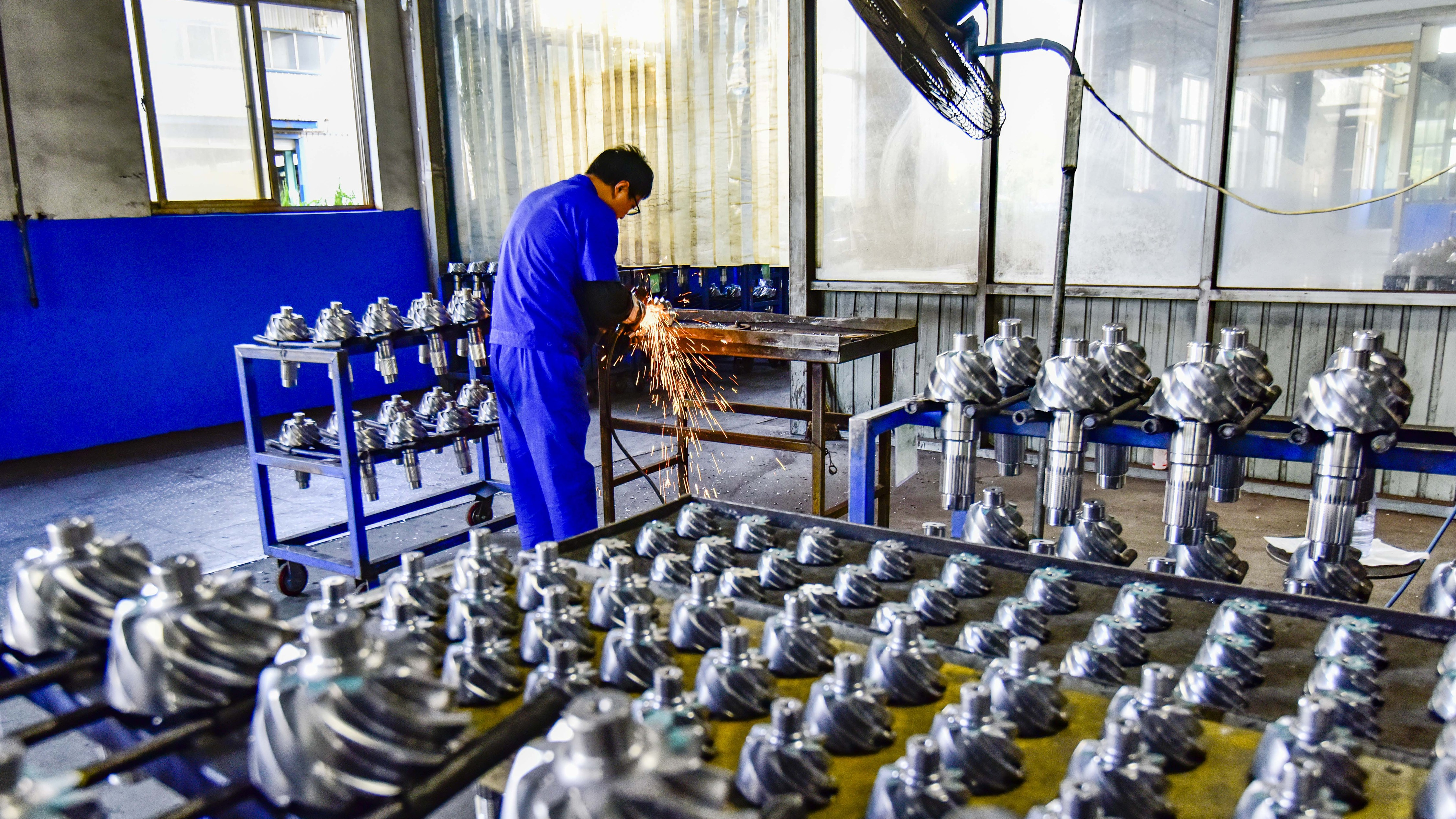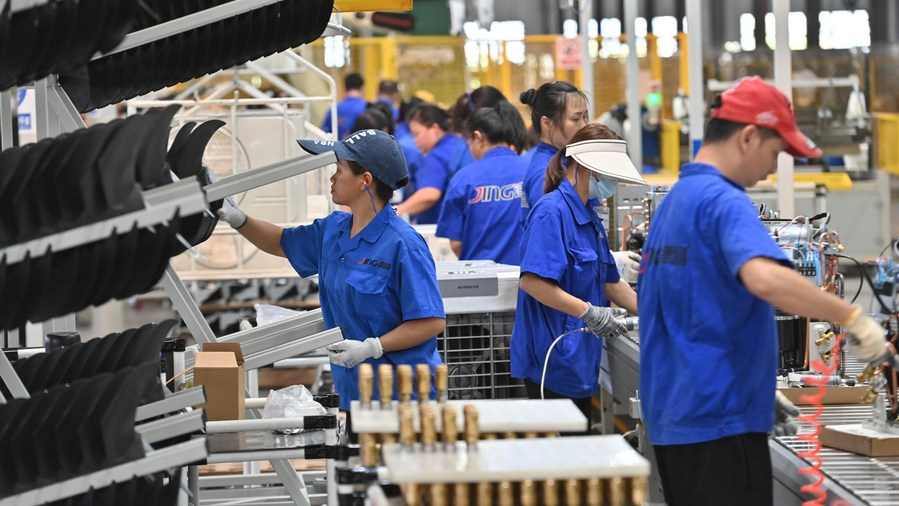
An employee processes products at a gear manufacturing enterprise in Qingzhou Economic Development Zone, Qingzhou City, east China's Shandong Province, September 30, 2023. /CFP
An employee processes products at a gear manufacturing enterprise in Qingzhou Economic Development Zone, Qingzhou City, east China's Shandong Province, September 30, 2023. /CFP
The purchasing managers' index (PMI) for China's manufacturing sector stood at 50.2 in September, bouncing back to the expansion zone, data from the National Bureau of Statistics (NBS) and the China Federation of Logistics and Purchasing showed on Saturday.
The manufacturing sector is the foundation of the real economy, and the increase of the PMI in September is an important signal that China's economic recovery is accelerating, said Wu Sa, deputy director of the Economic Research Institute of the Chinese Academy of Macro-economic Research.
For PMI, a reading above 50 indicates that factory activity is increasing. It is the first time since April that the PMI for China's manufacturing sector has climbed above 50, following four consecutive months of growth. Among the 21 surveyed industries, over half reported expansion in September, showcasing an overall improvement in the manufacturing climate.
"From the demand side, new orders continue to rise, indicating that the demand for the manufacturing market continues to improve," Wu told China Media Group, adding that market demand has enhanced the confidence and willingness of enterprises to expand production and investment.
The new order index for the manufacturing sector edged up 0.3 percentage points from August to 50.5 in September, while the production index went up 0.8 percentage points to 52.7 during the period, the data shows.
"A series of policies to stabilize investment and promote consumption have been introduced and implemented, focusing on expanding domestic demand and boosting business confidence," Wu added. "The effects of these policies and measures are gradually being released."
The upward trend of China's economy is unstoppable, noted Wu, though the manufacturing sector still faces pressure in terms of recovery and development due to high raw material costs, financial constraints and intensifying competition in relevant industries.

Employees work on the production line of an electrical equipment company in Liuzhou City, south China's Guangxi Zhuang Autonomous Region, September 21, 2023. /Xinhua
Employees work on the production line of an electrical equipment company in Liuzhou City, south China's Guangxi Zhuang Autonomous Region, September 21, 2023. /Xinhua
Preliminary signs of improvement in China's manufacturing sector had already emerged in August, with factory output and retail sales growth accelerating. Profits at industrial firms posted a 17.2 percent jump in August.
"The manufacturing PMI, plus the good industrial profit figures, suggest that the economy is gradually bottoming out," Zhou Hao, chief economist at Guotai Junan International, told Reuters.
In September, China cut the financial-institution reserve requirement ratio for the second time since the start of this year to consolidate the foundation for economic recovery and keep liquidity reasonably ample.
Other policies targeting key sectors, including real estate, have injected confidence into the market as well. China relaxed the criteria identifying first-home buyers to allow more people to benefit from preferential policies and lowered the interest rates of existing first-home mortgages.
NBS senior statistician Zhao Qinghe said that favorable policies that have been gradually taking effect are helping drive the growth of overall economic prosperity.
In the future, China needs to focus on promoting the effective implementation of the policies and measures that have been introduced and further consolidate the sustained recovery of the economy, Zhao said.
The NBS data also reveals that both manufacturing and non-manufacturing businesses maintained a stable outlook. In September, the non-manufacturing PMI came in at 51.7, up 0.7 percentage points from August, standing above the boom-or-bust line.
The services sector expanded alongside positive market expectations. Notably, water transport, postal service, telecommunications, IT and financial services grew rapidly, with activity indexes averaging 55 points or above.
Meanwhile, China's composite PMI stood at 52 in September, up from 51.3 in August, indicating that the production and operation activities of Chinese enterprises have picked up.